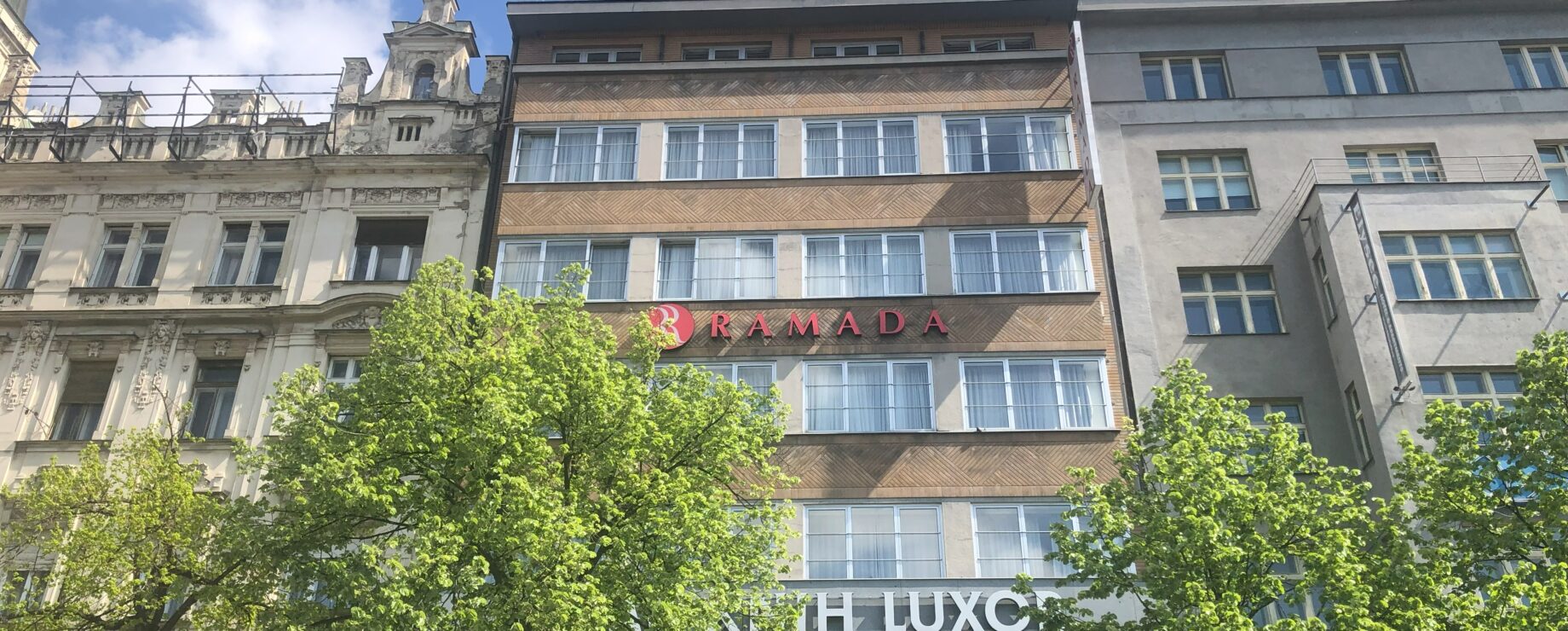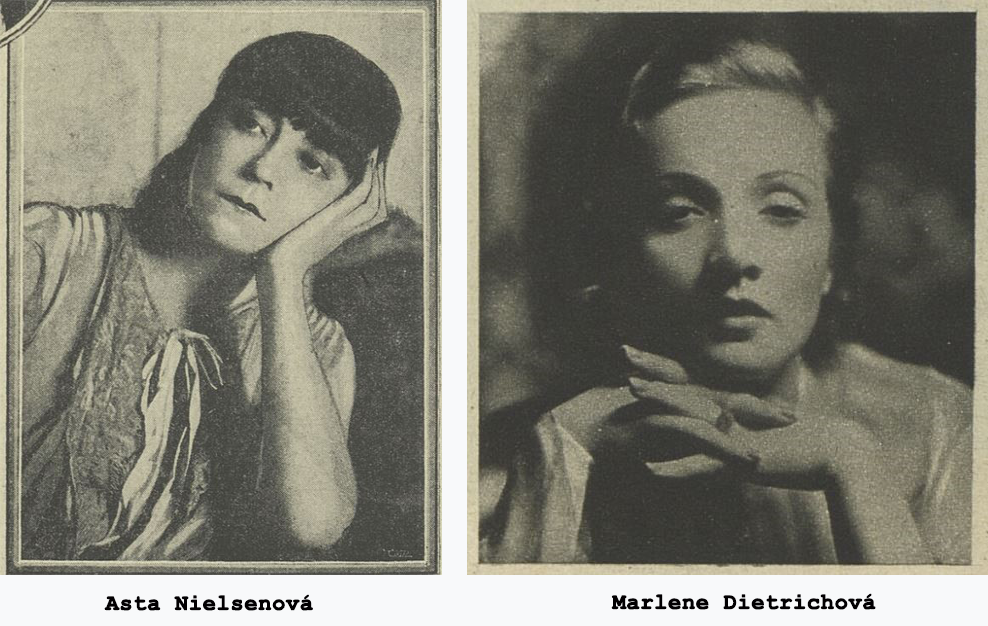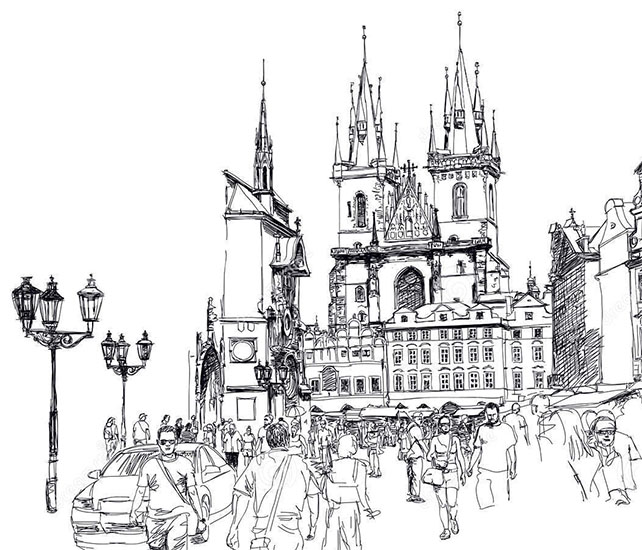
Cinemas and adored actresses
Known as “kino”, “biograf” or “kinematograf” in Czech, the cinema was one of the most popular places for people to spend time throughout the 20th century. In its early days, the cinema was a symbol of the modernity, and films were fascinating for visitors of all age, gender and social categories. The popularity of cinemas can be demonstrated with the data: in 1919, there were 40 cinemas in Prague, while during the 1920s and 1930s, their number grew to approximately 110. At the beginning, they showed silent films, sometimes accompanied with live music, and in the 1930s, sound films started to appear. In the Czech context, especially films of the U.S., Czechoslovak and German production were very popular.[1]
Film actresses
Actresses have been present in the film since its beginnings, and they became a subject of public interest. The magazines and newspapers of that time would discuss not only their acting performances, but also their private lives – and with women, this also covered their appearance and fashion style. With the film industry boom, the cosmetic and fashion industries started to flourish as well. Many female viewers wished to be like their acting idols.[2]
In his article for the Přítomnost magazine, the film critic and journalist Otto Rádl described the visual ideal of a female protagonist in the 1920s and 1930s popular German films in the following way:
“The German film naturally has the shortest route to our cinemas. As early as in the pre-war era, it proved influential, and it dominated completely during the war to reach the leading position afterwards in the search for new art style directions, which was consolidated in complete hegemony with the wide-spread occurrence of the sound and spoken film. Given the overall conformity of our and Germany’s ideological and moral climate, the erotic ideal of the German film saw the most favourable reception. While in the earliest days, Asta Nielsen was an embodiment of the prime mimetic art as well as an ideal of absolutely disembodied soulful erotica in Germany and around the world, soon afterwards, Pola Negri became a dream idol of passionate and beautiful woman and at the same time a perfect dramatic protagonist, just as the delicate Henny Porten was the type of the sunny, caring, motherly and redeeming womanhood.
Contemporary Vampires and Margaritas
Despite its seemingly mondain and up-to-date modernity, the ‘vamp’ type is one of the oldest erotic types. They are not very much unlike, whether it is Potiphar’s wife, Cleopatra or, eventually, Marlene Dietrich. While costume details and stage property may change, her very own dramatic means, the revealed calf silhouette, opening thighs, wiggling hips, subtle quiver of breasts, lips slightly open and narrowed eyes – all of this remains unchanged throughout the history…”[3]

[1] I. Koeltzsch: Praha sdílená a rozdělená, Praha: NLN, 2015, s. 240–265.
[2] M. Pachmanová: Civilizovaná žena: Ideál i paradox prvorepublikové vizuální kultury, Praha: UMPRUM, 2021, s. 134–141.
[3] O. Rádl: Erotický ideál doby ve filmu, Přítomnost 22 (1931), s. 346.
Sources of images:
Asta Nielsenová: Rozkvět, roč. 19, čís. 46., s. 8.
Marlene Dietrichová: Rozkvět, roč. 24, čís. 26., s. 13.
Další místa na téma "Notable Women of German-Speaking Prague"



